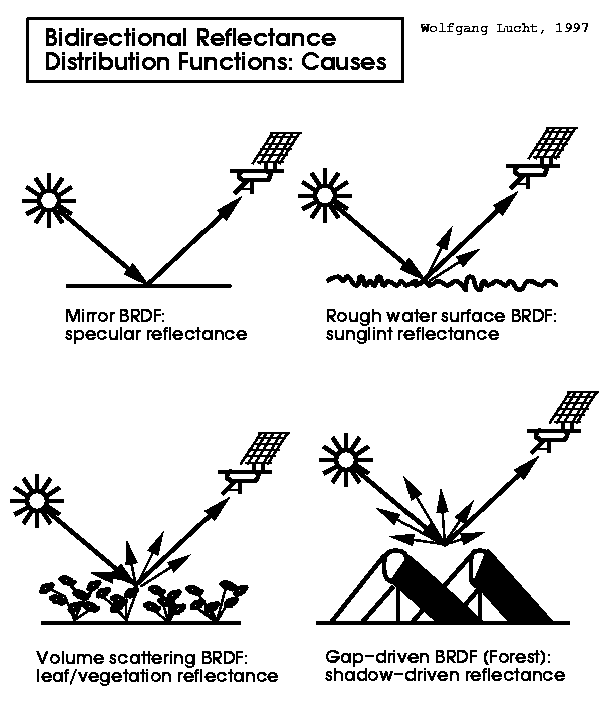- Home
- Spectralmass
- VIIRS
VIIRS Research
Introduction
Due to its three dimensional structure, the Earth's surface scatters radiation in an anisotropic manner, especially at the shorter wavelengths that characterize solar irradiance. The Bidirectional Reflectance Distribution Function (BRDF) specifies the behavior of surface scattering as a function of illumination and view angles at a particular wavelength.

The albedo of a surface describes the ratio of radiant energy scattered upward and away from the surface in all directions to the down-welling irradiance incident upon that surface. The completely diffuse bihemispherical (or white-sky) albedo can be derived through integration of the BRDF for the entire solar and viewing hemisphere, while the direct beam directional hemispherical (or black-sky) albedo can be calculated through integration of the BRDF for a particular illumination geometry.
Actual clear sky albedos under particular atmospheric and illumination conditions can be estimated as a function of the diffuse skylight and a proportion between the black-sky and white-sky albedos. The Visible Infrared Imaging Radiometer Suite (VIIRS) BRDF/Albedo Science Data Products provide white-sky albedos and black-sky albedos (at local solar noon) as both spectral and broadband quantities (VNP43I/M3, where M stands for moderate resolution bands and I stands for imagery resolution bands of VIIRS).
The VIIRS BRDF/Albedo Product also provides Nadir BRDF-Adjusted Reflectances (NBAR) --- surface reflectances corrected to a common nadir view geometry at the local solar noon zenith angle of the day of interest (VNP43A4). These anisotropically-corrected surface reflectances can serve as important inputs for studies using vegetation indices and for land cover classification and phenology efforts.
Professor Crystal Schaaf’s Lab
University of Massachusetts Boston
100 Morrissey Blvd.